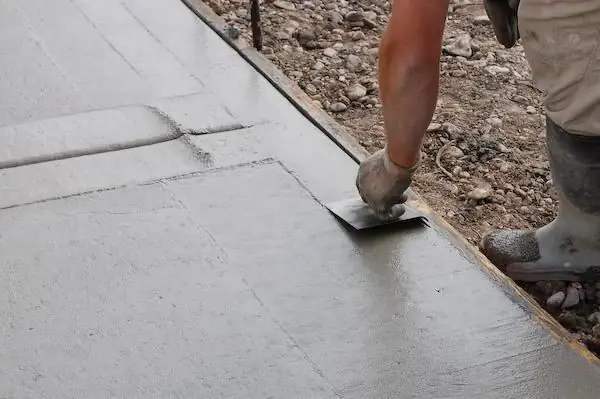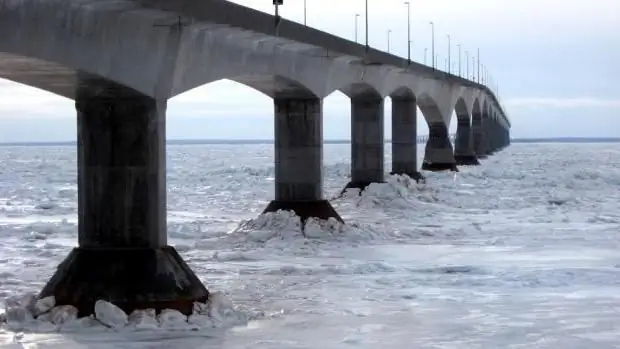Despite the variety of modern building materials, concrete continues to maintain a leading position among competing options, as it has such important characteristics as strength, reliability and durability. It is an integral part of mortars for foundations, wall masonry, plastering and other construction operations.

The water resistance of concrete, as well as its ability to withstand harsh weather conditions, are key to the long life of finished products. It is these criteria that are the main ones when choosing a brand of this building material.
Concrete, frost resistance and water resistance of which are at a high level, is a guarantee of quality and excellent performance of any structure. Under these propertiesrefers to the ability of concrete products to withstand the negative effects of natural phenomena such as moisture, water and freezing temperatures.
Currently, there are various brands of concrete in terms of frost resistance and water resistance, differing in quality, price and technological capabilities. This classification helps to choose the optimal material for creating structures designed for operation in certain conditions.
Concrete water resistance grades

Depending on the degree of water resistance, concrete is divided into ten main grades (GOST 26633). They are designated by the Latin letter W with a specific numerical value indicating the maximum water pressure that a 15 cm high cylindrical concrete test sample can withstand during special tests.
Determination of water resistance of concrete is carried out by direct and indirect indicators of its interaction with water. Direct indicators are the brand of concrete and its filtration coefficient, and indirect indicators are indicators of the water-cement ratio and water absorption by weight.
In private and commercial construction practice, in order to find out the water resistance of concrete, they pay attention to its brand, and the remaining criteria matter mainly in the production of this building material.
Characteristic features of concrete grades in terms of water resistance
When choosing the required brand of concrete to perform a certain typeconstruction works are guided by digital indices after the letter W, characterizing the degree of interaction of the material with moisture and water. So, for example, the lowest water resistance of concrete and, consequently, the low quality of the W2 brand. Solutions on this basis are strongly not recommended for use in environments even with a slight level of humidity.
Normal water permeability of W4 concrete. This means that this composition has the ability to absorb a normal amount of water, so its use is possible only if good waterproofing is provided. The next position in the quality scale is the W6 grade, which is characterized by reduced water permeability. This concrete belongs to the compositions of medium quality and low price category, which is the reason for the popularity of its use in construction.
W8 grade concrete has low permeability, as it absorbs moisture in an amount of only about 4.2% of its mass. It is a higher quality and more expensive option than the W6 brand.
Followed by concrete grades with indexes 10, 12, 14, 16, 18 and 20. The higher the number, the lower the water permeability of the material. According to this classification, W20 concrete is the most water-resistant, but it is not often used due to its rather high price.
Practical use of certain grades of concrete for water resistance

The variety of concrete should be selected depending on the operating conditionsobjects. For example, the W8 brand is quite suitable for pouring the foundation, provided that additional waterproofing is provided. Plastering of walls is carried out with concrete grades W8-W14. However, for the arrangement of sufficiently damp and cold rooms, the water resistance of concrete should be maximum, therefore it is recommended to use the highest quality mortars, and additional treatment of the walls with special primers will be required.
For high-quality and durable exterior wall decoration, pouring backyard areas and paths, concrete with maximum water resistance should also be used, as these areas will be systematically exposed to the negative effects of external weather factors.
DIY concrete additives for waterproofing
The need to use high-quality concrete mixes in the production of certain objects or their elements is obvious, but this requires significant financial investments due to the high cost of such materials. But what to do if the construction budget is limited, and the violation of the technological process is unacceptable? The answer is simple: you can use a compromise option, namely to increase the water resistance of concrete yourself.
Today, there are several effective ways to increase the resistance of concrete mixtures to water, but two of them have gained the most popularity: by eliminating concrete shrinkage and by temporarily affecting the concrete composition.
Elimination of the concrete shrinkage process
Concrete of low and medium gradesare porous materials that easily absorb moisture. This negative property is enhanced in the process of shrinkage of the solution during solidification. Thus, it is possible to improve the quality and water resistance of the concrete mix by reducing its shrinkage.
An integrated approach will help to achieve the desired result:
- It is necessary to use special additives in concrete for waterproofing. The principle of their action is that when the solution solidifies, they form a protective film that prevents its shrinkage. Today, there are various additives in concrete for water resistance on the market, and although they have one task, each individual option has its own characteristics, so you should carefully read the manufacturer's instructions before buying.
- In addition to the fact that special additives are added to concrete for water resistance, it is also recommended to water it. This procedure is performed during the first four days with an interval of 4 hours. Next, the concrete structure must dry naturally.
- With the rapid evaporation of moisture from the solution during solidification, unwanted shrinkage also occurs. To slow down this process, after pouring the concrete structure, it must be immediately covered with a special film, under which condensation will form, preventing shrinkage and increasing the strength of concrete. The coating is positioned so that it does not touch the fill. Small gaps are left at the edges for air ventilation.
Temporary impact onconcrete mix

This method is to let the dry solution "age" for a certain time. The main requirement in this case is compliance with the correct storage conditions. The mixture should be in a warm, dark room and subjected to constant moisture. Thus, in six months, its water resistance can increase several times.
Frost resistance of concrete

This indicator means the ability of concrete mixtures to maintain their physical and mechanical properties under conditions of repeated freezing and thawing. This characteristic plays a priority role in the choice of concrete for the construction of bridge supports, airfield and road surfaces, hydraulic structures, buildings and other objects operated in the middle and northern latitudes.
Determination of frost resistance of concrete is carried out by laboratory tests using two methods: basic and accelerated. If the results of the studies differ, the data obtained using the basic method will be considered the final version.
Research on the resistance of concrete to low temperatures

Tests are carried out using the main and control samples, which are produced from concrete of various grades for water resistance for serial testing. Control concrete blanks serveto determine their compressive strength. This procedure is carried out before testing the main samples, which will be subjected to alternate freezing and thawing in different water saturation modes that take place in natural climatic conditions.
For example:
- in the presence of the highest possible level of groundwater;
- during seasonal permafrost thaws;
- when exposed to precipitation;
- in the complete absence of periodic water saturation, when the concrete is reliably protected from groundwater and precipitation.
Classification of the level of frost resistance of concrete by grades

standards.
To determine the level of frost resistance of concrete, digital indicators from 25 to 1000 are used. The larger this value, the higher the quality and reliability of the material.
Concrete mix selection rules
The choice of the required brand of concrete mixtures for frost-resistant properties should be carried out taking into account the climatic features of the area, as well as the number of freezing and thawing cycles during the cold season. It should be noted that the mostFrost resistance is possessed by concretes with high density rates.






